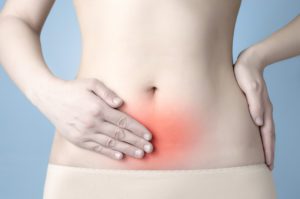
March is Endometriosis Awareness Month!
Endometriosis is a chronic inflammatory estrogen-dependent process that occurs when endometrial glands grow outside of the uterus but new emerging research suggests this definition may be too narrow. These lesions can occur in body parts such as the bowel, fallopian tubes, urinary tract, cervix, diaphragm, and even the brain. There are many women living with this invisible condition that often interferes with their lives such as halting their career or schooling. It has been reported to affect anywhere from 5-15% of all women of reproductive age and 70% of women with chronic pelvic pain. These numbers can translate to about 176 million women worldwide!
The average delay from experiencing symptoms and complications to proper diagnosis has been reported to be about 6.7 years. This factor of delay can be especially devastating for women in the prime of their reproductive years trying to conceive. Early age of menstruation and short menstrual cycle lengths are associated with an increased risk of endometriosis. Symptoms can vary and some women are asymptomatic to only discover they have endometriosis after struggling with infertility. Symptoms can often resemble and be confused with other conditions such as inflammatory bowel disease and gastroesophageal reflux disorder.
Some common symptoms include but are not limited to:
- Painful periods
- Painful sex
- Pain with the passing of bowel movements
- Constipation
- Nausea
- Burning or pain with urination
- Pelvic Pain and Abdominal Pain
- Infertility

Endometriosis is often diagnosed through surgical laparoscopy making diagnosis difficult to achieve. Some deeper endometrial lesions may be detected through MRI or ultrasound. Often, early diagnosis of endometriosis is a diagnosis of exclusion based on negative testing for other conditions and patient’s symptoms. A noninvasive reliable test has yet to be discovered and more research is needed in identifying less invasive testing such as reliable biomarkers through blood tests.
Some treatments include but are not limited to:
- Surgical removal, with superior results reported through excision surgery versus laparoscopic ablation
- Hormonal medications
- Pain medications
- Pelvic health physical therapy for symptom management and teaching of self-care tools
- Acupuncture for symptom management
- Exercise to decrease pain, improve function, and reduce fear-avoidance behaviors
- Holistic nutritional interventions to reduce inflammation
Resources to Learn More
Documentary Film
Books
Outsmart Endometriosis: Relieve Your Symptoms and Get Your Career Back, Dr. Jessica Drummond DCN CNS PT NBC-HWC
Beating Endo: How to Reclaim Your Life from Endometriosis, by Dr. Iris Orbuch MD and Dr. Amy Stein DPT
Online
Nancy’s Nook Endometriosis Education on Facebook
Exercise
Yoga for Endometriosis: Dustienne Miller, PT, MS, Board Certified Women’s Health Clinical Specialist (WCS), CYT
With an Open Learning Mind,
Andrea
References
Zandervan K, Becker C, Koga K, et al. Endometriosis. Nat Rev Dis Primers. 2018 Jul 19;4(1):9.
Bulun S, Yilmaz, B, Sison C, et al. Endometriosis. Endocrine Reviews. 2019 Aug; 40(4): 1048-1079
Fuldeore MJ, Soliman AM. Prevalence and Symptomatic Burden of Diagnosed Endometriosis in the United States: National Estimates from a Cross-Sectional Survey of 59,411 Women. Gynecol Obstet Invest. 2017;82(5):453-461.
















